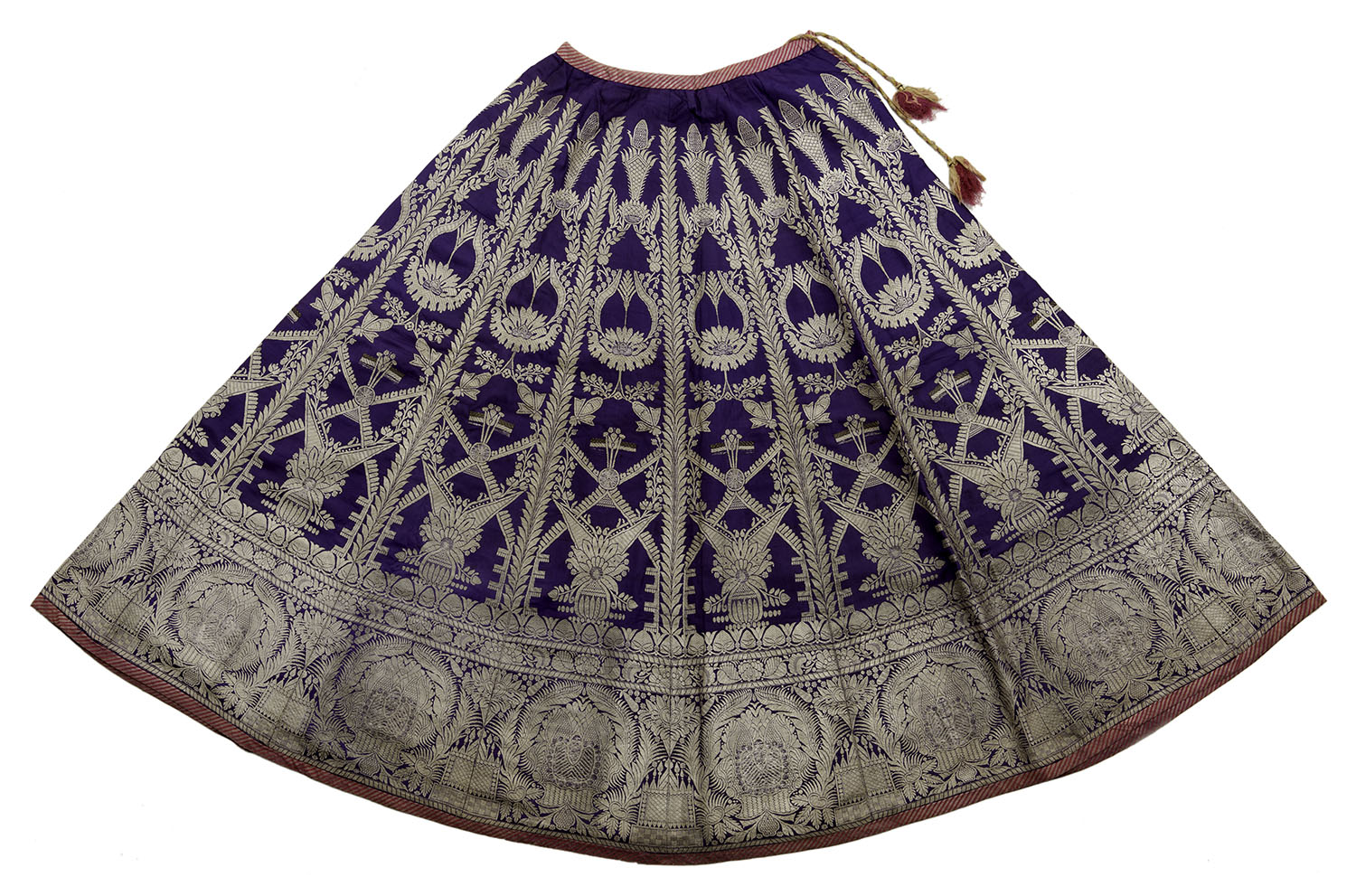ARTICLE
Brocade
Brocades are produced on a drawloom or a jacquard loom by a supplementary weft technique, where pattern wefts are inserted between the ground wefts and bound by ground warp. In a drawloom, the brocade design is woven with the attachment of a structure harness is used to produce the ground weave, and pattern harness or jala suspended from an overhead beam on the loom and creates the pattern. Weavers also work with jacquard attachments on treadle looms with localised adaptations to achieve similar results to those of a traditional drawloom and jacquard loom.
Brocades remain objects of luxury, and today, it is most extensively used on sarees. Major brocade manufacturing centres in India include Ahmedabad, Surat, Paithan, Aurangabad, Raichur, Murshidabad, Varanasi, New Delhi, Lucknow, Thanjavur, Tiruchirapalli and Chennai. Though a popular textile, the handloom brocade industry faces stiff competition from power loom-produced fabric. The increasing costs of raw materials like silk has also made it difficult for weavers to continue working on this craft.
Bibliography
Our website is currently undergoing maintenance and re-design, due to which we have had to take down some of our bibliographies. While these will be re-published shortly, you can request references for specific articles by writing to hellomapacademy@map-india.org.








